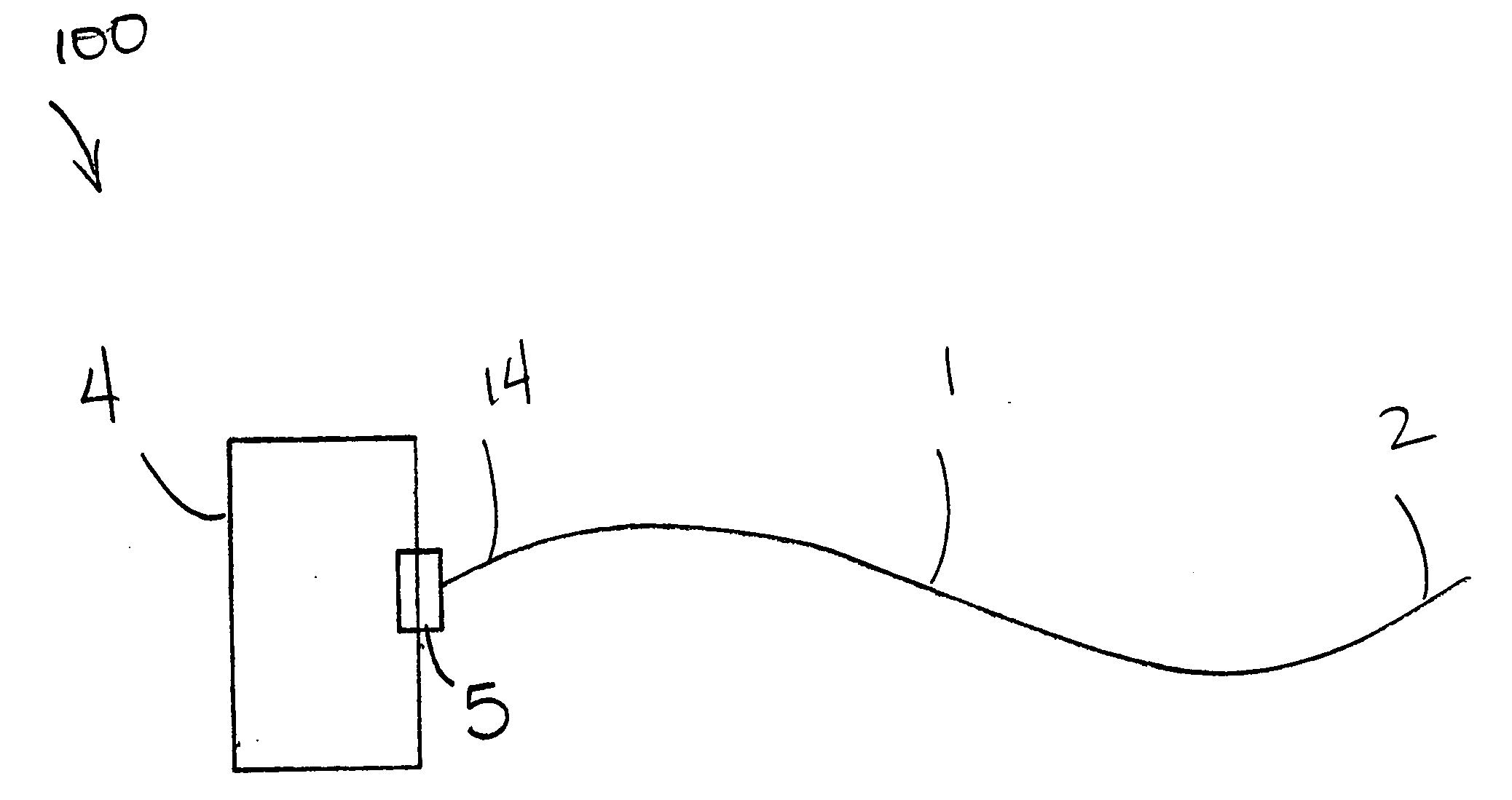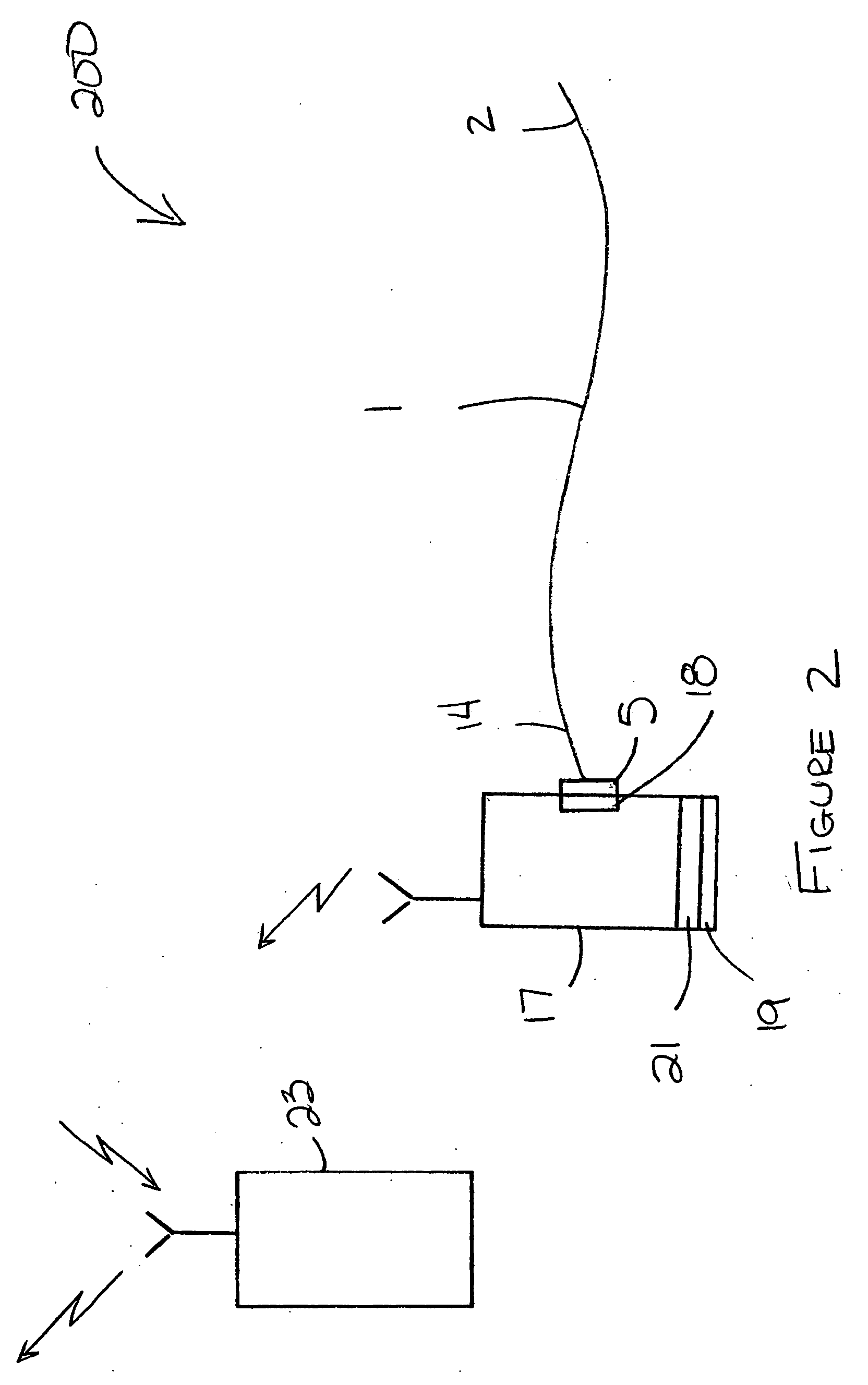Biological signal sensor on a body surface
a biomedical sensor and body surface technology, applied in the field of biomedical sensors, can solve the problems of patient skin irritation and/or skin infection, inability to use for a longer time, and other problems commonly encountered in long-term ecg monitoring
- Summary
- Abstract
- Description
- Claims
- Application Information
AI Technical Summary
Benefits of technology
Problems solved by technology
Method used
Image
Examples
Embodiment Construction
[0033]FIG. 1 schematically illustrates an embodiment of a biological signal sensor or biomedical sensor 100. The biomedical sensor 100 comprises a strand of an electrically conductive fiber 1, an ECG amplifier or electrocardiograph 4, and a sensor connector 5 electrically connecting the fiber 1 to the electrocardiograph 4. The biomedical sensor 100 acquires biological signals through contact with a subject and conducts the biological signals to the electrocardiograph 4.
[0034] The strand of the electrically conductive fiber 1 forms a sensor tip 2 and a non-sensing end 14. The fiber 1 can be a metal-coated synthetic fiber such as, for example, acrylic, nylon, and the like.
[0035] In an embodiment, the sensor connector 5 comprises a nylon frame that encapsulates the non-sensing end of the fiber 14, and protruding domes that squeeze the fiber 14 to a contact thus forming an electrical connection between the fiber and the contact. In an embodiment, the connector comprises a plurality of...
PUM
 Login to View More
Login to View More Abstract
Description
Claims
Application Information
 Login to View More
Login to View More - R&D
- Intellectual Property
- Life Sciences
- Materials
- Tech Scout
- Unparalleled Data Quality
- Higher Quality Content
- 60% Fewer Hallucinations
Browse by: Latest US Patents, China's latest patents, Technical Efficacy Thesaurus, Application Domain, Technology Topic, Popular Technical Reports.
© 2025 PatSnap. All rights reserved.Legal|Privacy policy|Modern Slavery Act Transparency Statement|Sitemap|About US| Contact US: help@patsnap.com



